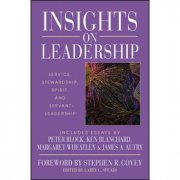
How to Build a Trading Bot
Introduction Automation isn鈥檛 a magic shortcut鈥攊ts a way to translate your trading plan into a reliable, repeatable workflow. I kicked off with a humble FX demo, a couple of moving-average rules, and the realization that sleep is not a trading edge. A lean bot let me test ideas, manage risk, and scale shifts in the market without babysitting charts all night. If you鈥檙e eyeing multi-asset playbooks鈥攆orex, stocks, crypto, indices, options, and commodities鈥攁 well-built bot can be your sidekick, not a replacement for judgment.
Core Architecture and Essentials A solid bot rests on three gears: data, strategy, and execution. Start with clean data ingestion (historical backtests and streaming feeds), a lightweight strategy engine (stateful rules that adapt to market regimes), and a disciplined risk module (position sizing, drawdown limits, stop rules). Add a robust execution layer that handles order routing, slippage, and latency, plus logging and monitoring so you can spot drift in seconds. A real-world tip: backtest on diverse regimes, then paper-trade for a few weeks before risking real capital.
Asset Classes & Strategy Tuning Diversification matters. A bot that trades forex, stocks, crypto, indices, and commodities benefits from different liquidity and microstructure. Tie each asset class to a tuned rule set鈥攖rend for equities, mean-reversion for some FX pairs, dispersion plays in crypto鈥攖hen unify the risk budget across assets. A practical example: a momentum rule on liquid equities plus a volatility-adjusted sizing rule in crypto can smooth drawdowns when Bitcoin whipsaws but still capture long runs in large-cap stocks.
Reliability, Risk & Compliance Treat risk like a guardrail, not a suggestion. Use max drawdown caps, limit exposure per asset, and implement circuit breakers for API or exchange outages. Keep a clean paper-trading trail, versioned strategy logic, and automated alerts for anomalies. When you鈥檙e testing leverage, keep sources of error bounded: start with small leverage, simulate slippage, and never risk money you can鈥檛 afford to lose. In a real-world routine, weekly reviews of P&L attribution and scenario testing are your anchors.
Security, Data and Charting Tools Protect API keys with vaults, rotate credentials, and enable read-only access where possible. Local logs plus cloud-backed dashboards help you spot drift quickly. For charting and analysis, lean on familiar tools鈥擳radingView for ideas, Python libraries for analytics, and backtesting frameworks to stress test strategies. The goal is transparent, auditable workflows you can hand to a partner or auditor without friction.
Web3 Frontier: DeFi, MEV, and Smart Contracts Web3 brings cross-chain liquidity but also new risks: gas costs, MEV exposure, and smart-contract risk. When dabbling in DeFi bots, prioritize audited protocols, use liquidity provisioning cautiously, and maintain governance oversight. Hardware wallets and encrypted key management aren鈥檛 optional; they鈥檙e the line between opportunity and loss. DeFi trading shines in long-tail markets, but you鈥檒l want built-in slippage ceilings and contingency paths for liquidity droughts.
The Future: AI, Automation, and Cross-Asset Trading AI is reshaping how we pick rules, optimize parameters, and adapt to regimes. Expect reinforcement-learning ideas to virtualize parameter sweeps, while on-chain automation promises faster execution for smart-contract-based strategies. The trend isn鈥檛 鈥渁utomate everything now鈥?but 鈥渂uild adaptive systems that learn from data and stay auditable.鈥?A catchy slogan you鈥檒l hear: trade smarter, not harder鈥攅mpowered by smarter code.
Practical Roadmap: From Idea to Live Bot
- Start with a simple, well-documented strategy and a single liquid asset.
- Backtest across regimes; fix overfitting and discard fragile rules.
- Move to paper trading; simulate real-world latency and fees.
- Add risk controls and multi-asset routing gradually.
- Deploy with small capital; monitor, iterate, and document every change.
Takeaways and Promo If you鈥檙e aiming for a scalable edge in a multi-asset world, build a bot that combines disciplined risk, clean data, and transparent automation. A well-tuned bot won鈥檛 replace your eyes and judgment, but it will amplify them鈥攇iving you steady, repeatable process and the freedom to explore ideas. Edge your way into the future of trading with a bot that learns, safeguards, and adapts. Trade smarter. Stay curious. Your next breakthrough may well be the next update you push to your own system.



